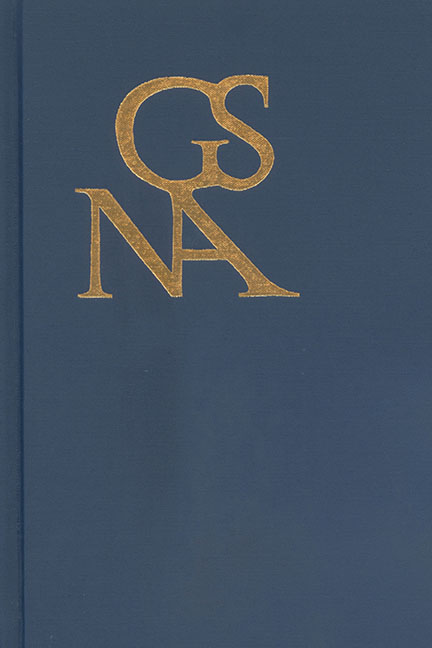Towards Goethean Anthropology: on Morphology, Structuralism, and Social Observation
Published online by Cambridge University Press: 28 October 2020
Summary
IN THE FIRST volume of Zur Morphologie (On Morphology), Goethe speaks of “drei große[n] Weltgegenden” (three great regions of the world) that he had begun to explore in Italy in the late 1780s, namely Kunst, Natur, and menschliche Gesellschaft (art, nature, and human society). Though his principles of observation will most prominently be developed in reference to natural phenomena—through his analyses of the growth of leaves, for example—Goethe holds that, in effect, “alles ist Blatt” (everything is leaf), such that phenomena outside of nature, including human culture and society, can be interpreted in analogous morphological terms. While Goethe's highly articulated positions on nature and art are well known, if we speak of his method of observing human society, we arrive in territory that is still largely unexplored. In Zur Morphologie, however, he states with no qualifications: “Ich verstehe die menschliche Gesellschaft” (MA 12:69; I understand human society). Though he will never explicitly expound a theory of social observation, the distinctive practice of seeing that he cultivates regarding science and art conjoins readily with his morphological conception of form to yield a method that proves fruitful also for the Weltgegend of the social.
Over the course of his life, Goethe on several occasion composes methodical observations of social phenomena—especially of ritualized festivities— in a way that, according to the categories of our time, would certainly fall within the social sciences: In Frankfurt, in 1764, he observes the election and coronation of Holy Roman Emperor Joseph II, and, almost half a century later, composes an account of it as part of Dichtung und Wahrheit (Poetry and Truth); in the late 1780s, he takes an interest in various aspects of contemporaneous Italian life, including lower-class labor in Naples and, most famously, the Carnival in Rome, and publishes accounts of both in the Teutscher Merkur (German Mercury); and in 1814, he witnesses the festival of Saint Roch in Bingen, publishing a description in Über Kunst und Alterthum (On Art and Antiquity). Viewed within the scope of his whole oeuvre, the writings in this genre are certainly few and sporadic, yet they are composed with an acuity, and are of a quality, James Sydney Slotkin has asserted, that “might well excite the envy of professional ethnographers.”
- Type
- Chapter
- Information
- Goethe Yearbook 27 , pp. 137 - 164Publisher: Boydell & BrewerPrint publication year: 2020



